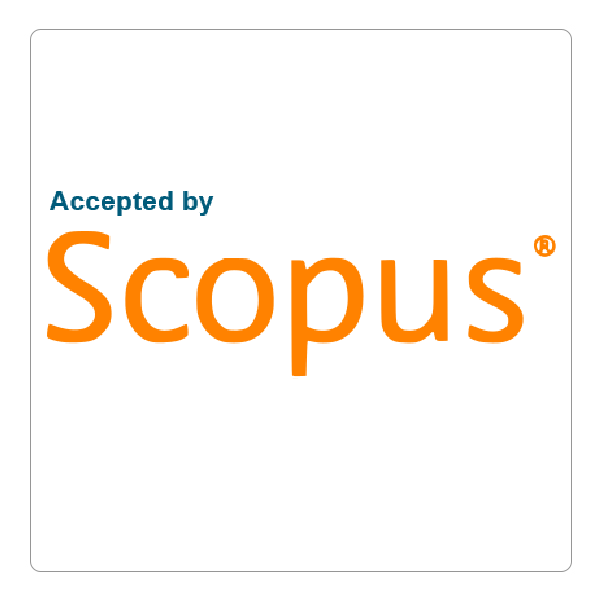How to Cite This Article
Omer, Zayoor Z.; Rashid, Tavga S.; and Awla, Hayman kakakhan
(2019)
"Influence of Two Varieties of Broad Bean and Beauveria bassiana (Blas) on Aphis fabae scop. Under Field Conditions,"
Polytechnic Journal: Vol. 9:
Iss.
2, Article 3.
DOI: https://doi.org/10.25156/ptj.v9n2y2019.pp16-19
Document Type
Original Article
Abstract
Black bean aphid (Aphis fabae scop.), belongs to order Hemiptera and family Aphididae, is one of the important pests of the Fabaceae family. Beauveria bassiana is an important biocontrol agent to replace chemical insecticides. Therefore, in this research, two different varieties of broad bean with three different concentrations of B. bassiana were investigated on adults of fabae aphids under field conditions. After 3, 5, 7, and 14 days, the effect of the B. bassiana on the population of aphids was measured. The local variety was found to be more sensitive to the aphids compare with the Spain variety. In the high concentration (108 spores/ml), 80% mortality was obtained with B. bassiana in day 3 with local variety; then mortality increased after 5, 7, and 14 days of measuring the population of the adults. Mortality declined with the decrease in concentrations. The Spain variety was found to be resistance because fewer aphids were recorded compared to the local variety. In the highest concentration and day 14, mortality was 100%. The achieved results showed that B. bassiana can be used as a potential biocontrol agent for the management of black bean aphid in the fields.
Publication Date
10-30-2019
References
Abbott, W. S. 1925. A method of computing the effectiveness of an insecticide. J. Econ. Entomol. 18(2): 265-267.
Akmal, M., S. Freed, M. N. Malik and H. T. Gul. 2013. Efficacy of Beauveria bassiana (Deuteromycotina: Hypomycetes) against different aphid species under laboratory conditions. Pak. J. Zool. 45(1): 71-78
. Butt, T. M., C. Jackson and Magan, N., editors. 2001. Fungi as Biocontrol Agents: Progress Problems and Potential. Centre for Agriculture and Bioscience International, Wallingford.
Feng, M. G., T. J. Poprawski and G. G. Khachatourians. 1994. Production, formulation and application of the entomopathogenic fungus Beauveria bassiana for insect control: Current status. Biocontrol Sci. Technol. 4(1): 3-34.
Ferreira, D. F. 2011. Sisvar: A computer statistical analysis system. Ciência Agrotecnol. 35(6): 1039-1042.
Fouad, M. and Malik, L. 2016. Genetic resource of the resistance of Vicia faba L. against the black bean aphid, Aphis fabae scopoli. J. Agric. Stud. 4(2): 107-114.
Gould, F., G. G. Kennedy and M. T. Johnson. 1991. Effects of natural enemies on the rate of herbivore adaptation to resistant host plants. Entomol. Exp. Appl. 58(1): 1-14.
Grund, J. and L. Hirsch. 2011. The Potential of Entomopathogenic Fungal Isolates as an Environmentally Friendly Management Option against Acanthoscelides obtectus. SLU-Swedish University of Agricultural Sciences, Alnarp.
Gurulingappa, P., G. A. Sword, G. Murdoch and P. A. McGee. 2010. Colonization of crop plants by fungal entomopathogens and their effects on two insect pests when in planta. Biol. Control. 55(1): 34-41.
James, R. R., B. T. Shaffer, B. Croft and B. Lighthart. 1995. Field evaluation of Beauveria bassiana: Its persistence and effects on the pea aphid and a non-target coccinellid in alfalfa. Biocontrol Sci. Technol. 5(4): 425-438.
Knudsen, G. R., J. B. Johnson and D. J. Eschen. 1990. Alginate pellet formulation of a Beauveria bassiana (Fungi: Hyphomycetes) isolate pathogenic to cereal aphids. J. Econ. Entomol. 83(6): 2225-2228.
Korunić, Z. 2013. Diatomaceous earths: Natural insecticides. Pesticidi Fitomed. 28(2): 77-95.
Lopez, C. D. 2015. Ecological Roles of Two Entomopathogenic Endophytes: Beauveria bassiana and Purpureocillium lilacinum in Cultivated Cotton Doctoral Dissertation.
Maina, U. M., I. B. Galadima, F. M. Gambo and D. Zakaria. 2018. A review on the use of entomopathogenic fungi in the management of insect pests of field crops. J. Entomol. Zool. Stud. 6(1): 27-32.
Mascarin, G. M. and S. T. Jaronski. 2016. The production and uses of Beauveria bassiana as a microbial insecticide. World J. Microbiol. Biotechnol. 32(11): 177.
Maurer, P., Y. Couteaudier, P. A. Girard, P. D. Bridge and G. Riba. 1997. Genetic diversity of Beauveria bassiana and relatedness to host insect range. Mycol. Res. 101(2): 159-164.
McKinnon, A. C., S. Saari, M. E. Moran-Diez, N. V. Meyling, M. Raad and T. R. Glare. 2017. Beauveria bassiana as an endophyte: A critical review on associated methodology and biocontrol potential. BioControl. 62(1): 1-17.
Samish, M., H. Ginsberg and I. Glazer. 2004. Biological control of ticks. Parasitology. 129(S1): S389-S403.
Saranya, S. 2009. Biocontrol of Cowpea Aphid Aphis craccivora (Koch) using Entomopathogenic Fungi Doctoral Dissertation, Department of Agricultural Entomology, College of Horticulture, Vellanikkara.
Sayed, S. M., E. F. Ali, S. A. El-Arnaouty, S. F. Mahmoud and S. A. Amer. 2018. Isolation, identification, and molecular diversity of indigenous isolates of Beauveria bassiana from Taif region, Saudi Arabia. Egypt. J. Biol. Pest. Control. 28(1): 47.
Selvaraj, K., H. D. Kaushik and G. Rachna. 2012. Evaluation of Beauveria bassiana (Balsamo) Vuillemin against coriander aphid, Hyadaphis coriandri (Das) (Aphididae: Homoptera). J. Biol. Control. 26(1): 55-58.
Shannag, H. K. 2007. Effect of black bean aphid, Aphis fabae, on transpiration, stomatal conductance and crude protein content of faba bean. Ann. Appl. Biol. 151(2): 183-188.
Thungrabeab, M. 2007. Effect of entomopathogenic fungi, Beauveria bassiana (Balsam) and Metarhizium anisopliae (Metsch) on non target insects. Curr. Appl. Sci. Technol. 7(1): 9-11.
Vega, F. E. 2018. The use of fungal entomopathogens as endophytes in biological control: A review. Mycologia. 110(1): 4-30.
Wafaa, L. A., E. A. Abdel-Hakim and H. M. Metwally. 2017. Influence of Entomopathogenic fungus Beauveria bassiana on the mortality, reproduction and enzyme activity of the aphid adults Aphis craccivora (Koch). Middle East J. Appl. Sci. 7(3): 567-573.
Wang, Z. G. and G. R. Knudsen. 1993. Effect of Beauveria bassiana (Fungi: Hyphomycetes) on fecundity of the Russian wheat aphid (Homoptera: Aphididae). Environ. Entomol. 22(4): 874-878.











Follow us: